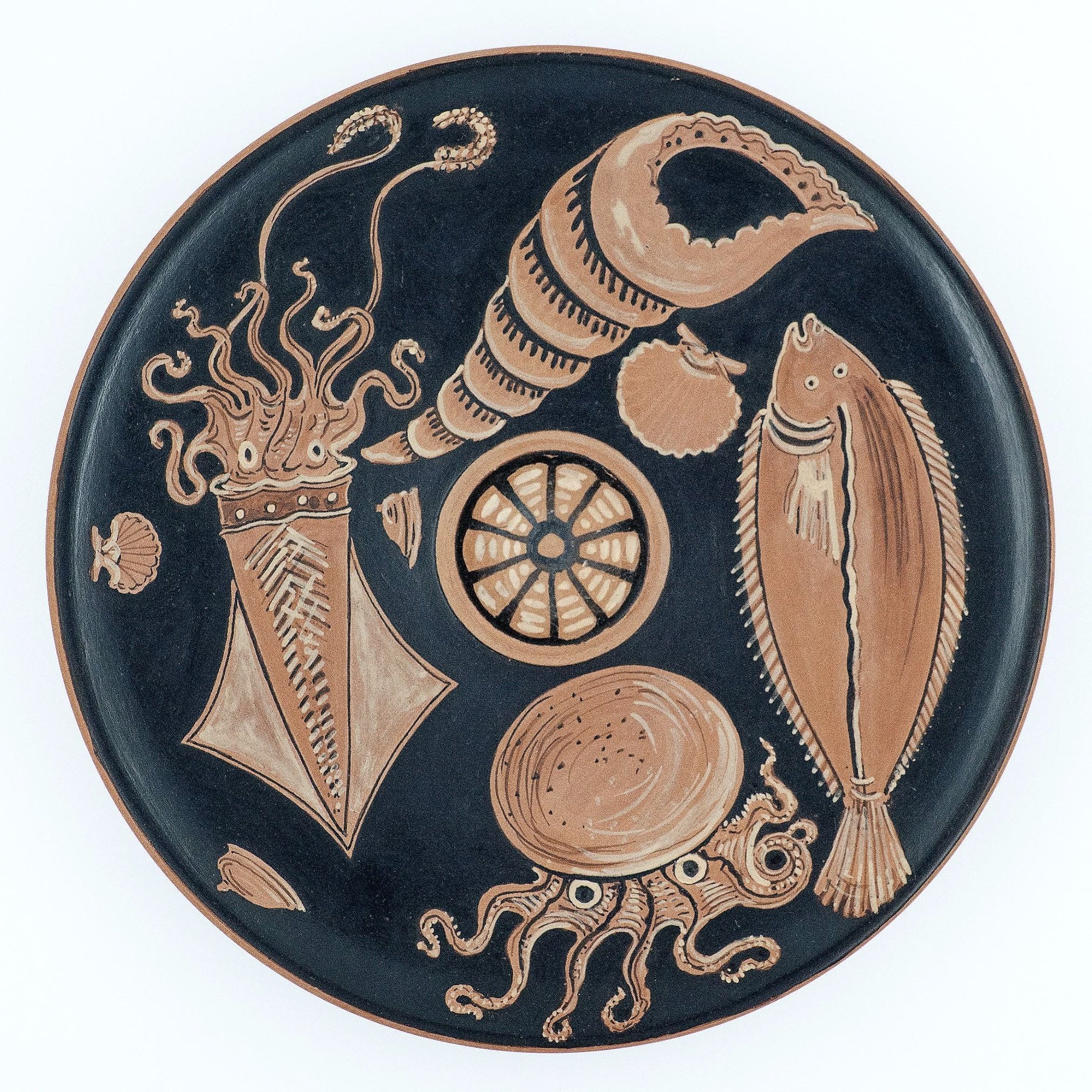
Rockfish, Bouillabaisse, and Red-Figure Fishplates
March connects Mediterranean cuisine with ancient art. Bouillabaisse, Marseille’s famous fish stew, began as a poor fisherman’s dish made from small, bony rockfish they couldn’t sell. The tradition dates back to the Greek Phoceans, who founded Marseille in 600 BCE and made a simple fish broth called kakavia.
At the same time, Greek artisans created fish plates, decorated with marine life such as bream, perch, torpedo fish, tuna, flying fish, puffer fish, scorpion fish, squid, cuttlefish, octopus, scallops, clams, murex, sea snails, shrimp, crabs, dolphins, and even hippocamps. These plates were first made in Athens in the late 5th century BCE, featuring fish arranged belly-outward. In Southern Italy, settlers from mainland Greece and the Aegean islands later produced more colorful versions, placing the fish belly-inward around a central cup for oil or sauce.
Pottery and culinary tradition have long been intertwined, with vessels crafted to serve, store, and celebrate food. While bouillabaisse isn’t served on fish plates, both reflect the resourcefulness of fishermen and the artistry of ancient craftsmen—transforming simple ingredients into lasting traditions.


Leave a comment